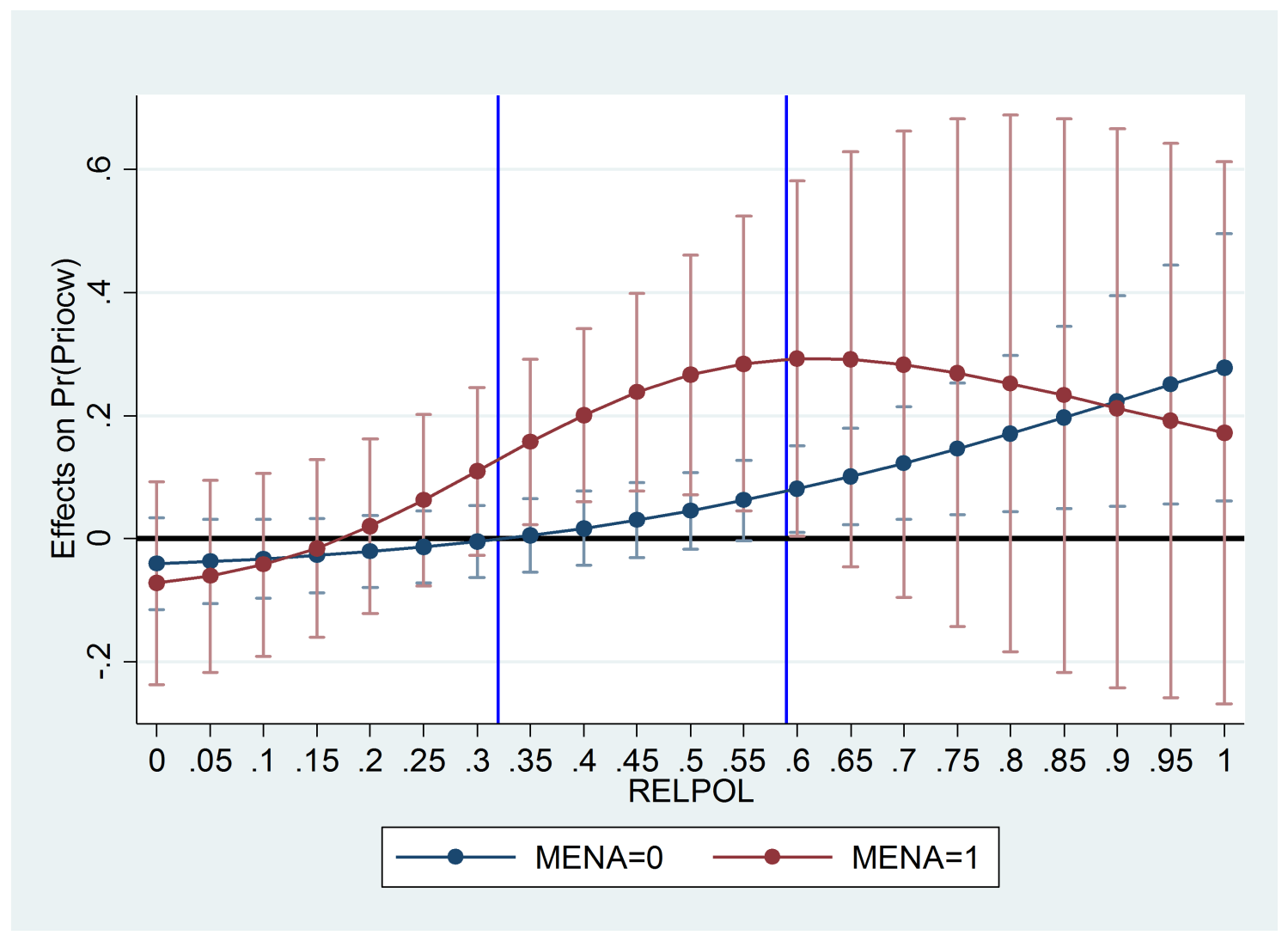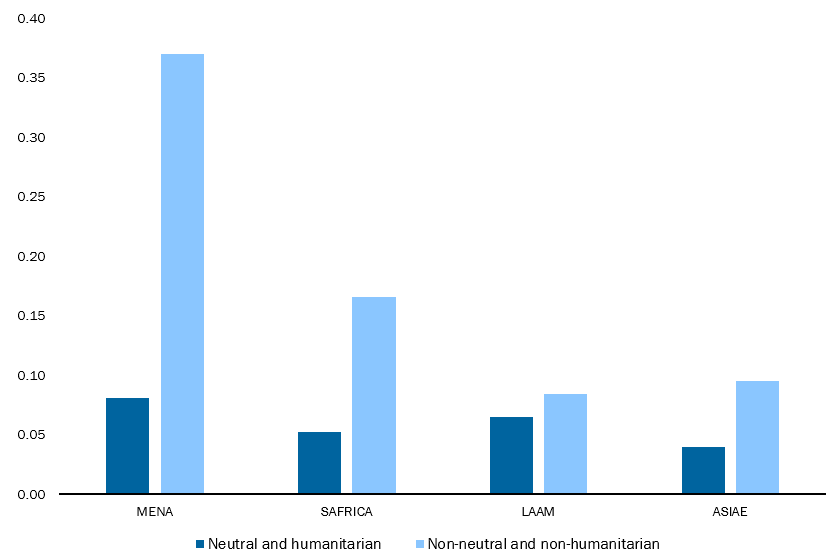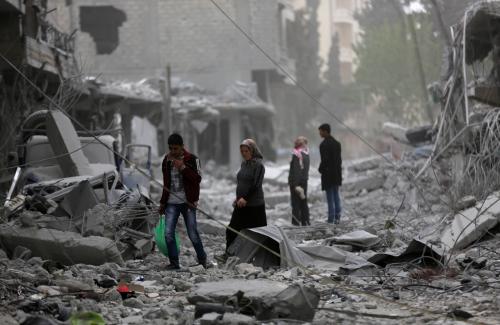The Arab Spring initially brought hope for change in the Middle East and North Africa (MENA), but the term soon became a misnomer. After the protests toppled several autocratic governments, many people recognized that the transition would be prolonged and difficult. In several countries, hope quickly turned into despair as political violence escalated. Yet, even as these events unfolded, the world was unprepared for the gravity of the post-Arab Spring civil wars. The consequences of these wars were simply unimaginable at the time. They brought about devastation and suffering on a scale unseen since World War II. How could this happen?
Before the Arab Spring, except for Yemen, the countries in the Middle East and North Africa did not fit the profile of countries at risk for civil war. Following independence, most Arab states made substantial socioeconomic progress, nearly all of them achieved middle-income status, reduced extreme poverty and inequality, and improved access to basic services. Importantly, the Arab Spring protests were initially peaceful and drew broad-based support due to widespread dissatisfaction with the erosion in the living standards of the middle class, the shortage of formal sector jobs, and elite capture.
In “The New Arab Wars: Uprisings and Anarchy in the Middle East” Mark Lynch draws attention to the role of foreign interventions in the aftermath of the initial protests. He argues that regional powers used the Arab Spring as an opportunity to increase their influence in the region. A multitude of stakeholders from multiple countries intervened, in an uncoordinated fashion, where the Arab Spring uprisings were intense. Some of these interventions had humanitarian goals, but others did not, and provided military support to different sides in the conflict. The objectives of interventions also changed quickly as the situation on the ground evolved. Since interventions were often not neutral and favored different rebel factions, they created conditions for the competitive arming of rebels and financial support for rebel groups, increasing the risk of conflict intensification.
In a recent paper, we explore the link between non-neutral and non-humanitarian foreign military interventions, identity-based polarization, and civil conflict. Panel data for 138 countries tell us that for decades—from 1960 to 2005—nearly all MENA countries have been targets of this type of military intervention, defined as the “movement of regular troops or forces of one country inside another, in the context of some political issue or dispute.” Before the Arab Spring, the incidence of conflict and military interventions in the Middle East and North Africa far exceeded that in other regions (Figure 1). The region with the second highest incidence of such interventions, sub-Saharan Africa, had half the prevalence of that observed in MENA. Meanwhile, at the beginning of the 1960s, identity-based polarization along religious or ethnic lines was not higher in MENA than elsewhere in the world.
In our paper, we argue that military interventions that are non-neutral and non-humanitarian are problematic because they alter the probability of winning of the warring factions, either through direct military assistance or through incentives to raise war-related resources, or both. This in turn intensifies identity-based polarization by stoking inter-group antagonism through alienation and increases the probability of conflict. In addition, this type of intervention has the potential to increase the intensity of fighting and the associated casualties, as external support decreases the rebels’ dependence on local support and therefore their incentives to protect the local population.
Figure 1: Non-neutral and non-humanitarian foreign military intervention, polarization, and conflict by region (per country per period)

The case of Lebanon illustrates this issue. Prior to the civil war, interventions started when the Palestinian Liberation Organization (PLO), after getting pushed out of Jordan following the ‘Black September’ of 1970, established a presence in Lebanon, disturbing the sectarian balance in the country. After 1970, interventions in Lebanon supported the Shia minority, which was pushed out of Southern Lebanon into the urban peripheries of Beirut. These interventions occurred in the context of shifting population weights and led to a struggle for political power, which resulted in a split into a pro-Nasser Sunni Muslim camp and pro-Western Christian camp and growing intergroup alienation, which increased religious and sectarian polarization. Eventually, a confrontation between the Lebanese Forces (LF) and the Lebanese National Movement (LNM) erupted and sectarian violence escalated, leading to further interventions in a vicious cycle that grew into a large-scale conflict.
Our paper provides evidence that non-humanitarian and non-neutral interventions intensify religious polarization through their effect on inter-sectarian alienation, increasing the risk of high-intensity conflict in MENA, but not in the rest of the world (Figure 2). In other words, even though religious polarization was not high at the beginning of the estimation period, foreign military interventions have a divisive effect on the behavior of rival sectarian groups. They increased inter-group alienation and therefore identity-based polarization along ethnic and religious lines. These findings are consistent with those of Kristian Skrede Gleditsch, who argues that transnational linkages and the attributes of neighboring states can affect the risk of conflict in a country. He finds that the risk of civil war is substantially higher in countries with many transborder groups on its territory or in countries neighboring fragile or authoritarian states.
Figure 2: Marginal effect of non-neutral and non-humanitarian intervention by region

Non-neutral and non-humanitarian foreign military interventions are only one factor among many that could inflame sectarian conflict. Domestic policies in many MENA states, such as repression and the use of sectarianism to prevent the emergence of cross-sectarian opposition fronts or to contain protests, have also stoked sectarianism.
Finally, it is worth stressing that not all types of foreign military interventions increase the risk of conflict. We find no such effect in the case of neutral and humanitarian military interventions, which are evenly distributed across regions and are much less prevalent in MENA than the non-neutral and non-humanitarian ones (see Figure 3). The unintended consequences of the latter provide one explanation for the “Arab Spring paradox” of peaceful protests in middle-income countries leading to sectarian conflict and violent civil wars.
Figure 3: Distribution of military intervention frequency by type and region (per country per period)







Commentary
Unintended consequences? Foreign intervention, polarization, and conflict in MENA
October 17, 2018